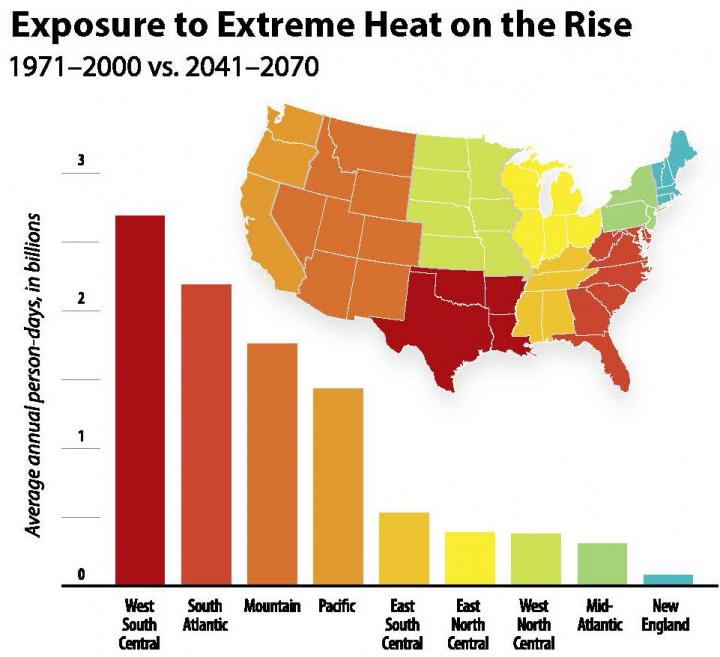U.S. residents’ exposure to extreme heat could increase four- to six-fold by mid-century, due to both a warming climate and a population that’s growing especially fast in the hottest regions of the country, according to new research.
The study, by researchers at the National Center for Atmospheric Research (NCAR) and the City University of New York (CUNY), highlights the importance of considering societal changes when trying to determine future climate impacts.
“Both population change and climate change matter,” said NCAR scientist Brian O’Neill, one of the study’s co-authors. “If you want to know how heat waves will affect health in the future, you have to consider both.”
Extreme heat kills more people in the United States than any other weather-related event, and scientists generally expect the number of deadly heat waves to increase as the climate warms. The new study, published May 18 in the journal Nature Climate Change, finds that the overall exposure of Americans to these future heat waves would be vastly underestimated if the role of population changes were ignored.
The total number of people exposed to extreme heat is expected to increase the most in cities across the country’s southern reaches, including Atlanta, Charlotte, Dallas, Houston, Oklahoma City, Phoenix, Tampa, and San Antonio.
The research was funded by the National Science Foundation, which is NCAR’s sponsor, and the U.S. Department of Energy.
Climate, population, and how they interact
For the study, the research team used 11 different high-resolution simulations of future temperatures across the United States between 2041 and 2070, assuming no major reductions in greenhouse gas emissions. The simulations were produced with a suite of global and regional climate models as part of the North American Regional Climate Change Assessment Program.

